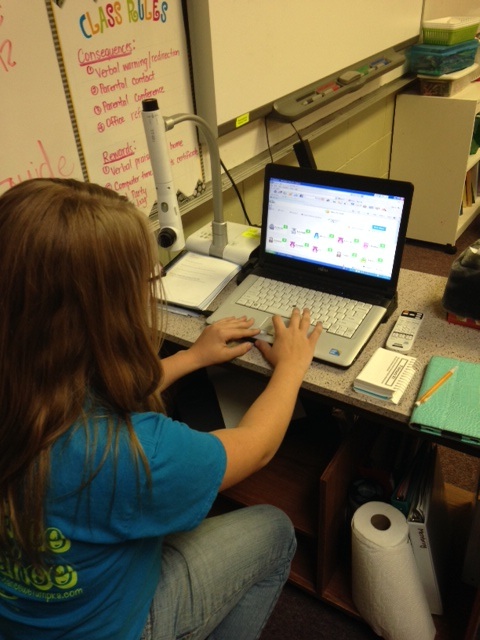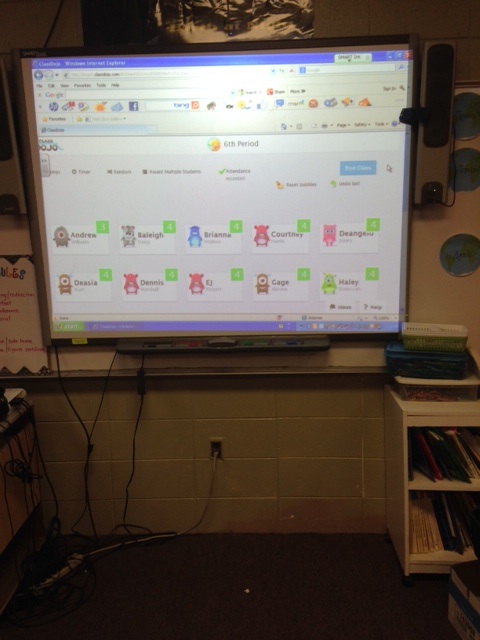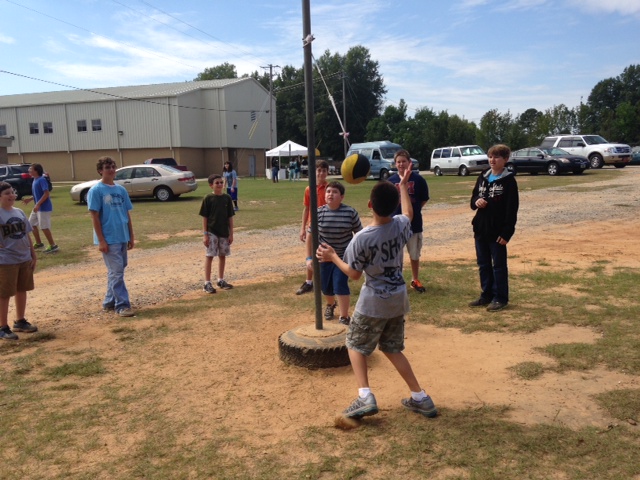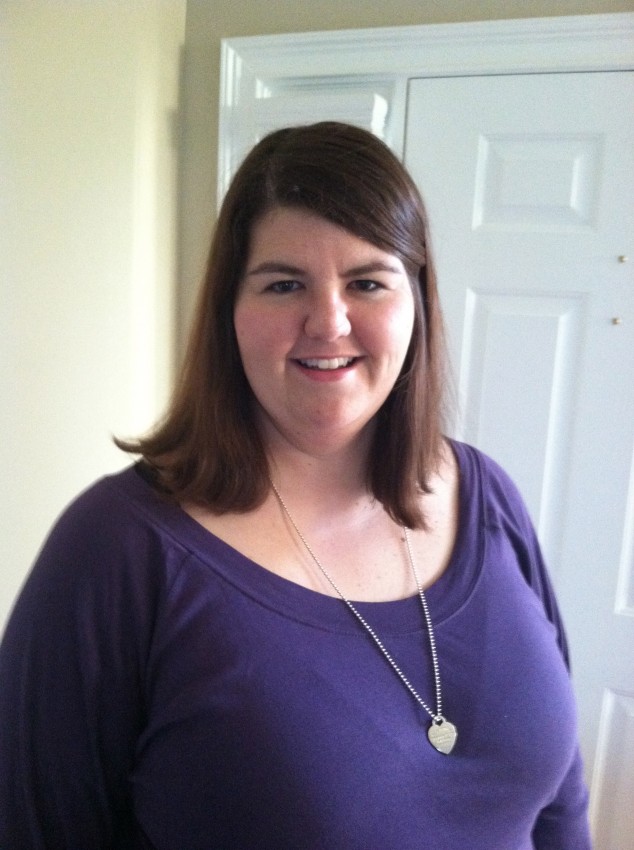
Class Dojo is a popular and somewhat controversial free tech tool for behavior management. I frequently hear it recommended by teachers at all grade levels, but am not familiar with it personally. So, I’ve invited a teacher who has used Class Dojo with her students to explain what’s worked for her. Amanda Killough, who has been teaching middle school Social Studies for eleven years, is here to share with us how Class Dojo helps reinforces positive behavior in both her individual students and the class as a whole. Thank you, Amanda!
Teaching middle school is not for the faint of heart. Often, when I tell people what grade I teach, I get the look of sympathy and a good old-fashioned “Bless your heart!” I, however, love the middle grades and all the challenges that come along with them. Managing middle school kids is sometimes like herding cats, but Class Dojo is a great tool to make it easier.
I have been using Dojo in my classroom for two years and absolutely adore it! Dojo is a free (!) online tool that allows teachers to set up classes and keep track of positive and negative behaviors in class. When I first learned about Dojo, I was not sure if it my students would find it too babyish or silly. I had nothing to worry about- middle school students LOVE Dojo!!
Class Dojo is easy to set-up and use (which is always a plus). Simply create an account using your school email and you are ready to go. Once you are into Dojo, you can choose icons for each class and begin setting up your classes. The program automatically assigns fun avatars for each student, but you can change them. Next, you can use the pre-set positive and negative behaviors or personalize them. Very quick and easy!

Now that you are set-up, the fun begins! I display Dojo on my SMART board and each week I have a Dojo assistant for each class that assists me with getting the class started. That student is chosen based on their previous week’s Dojo points (more on that later). To begin a class in Dojo, you must take attendance first and then the class is ready to earn points. I allow my assistant to take attendance in Dojo while I am getting the class started on their bell ringer.
One of the great things about Dojo is that it allows you to award points to individual students or the entire class. If all students come in and are working on their bell ringer, I have my student Dojo assistant award the entire class a point for being on task. This lets them know I have recognized they are following class procedures. When you award a point, Dojo makes a happy sound and gets the student’s attention. If several students are off task, I do not award the entire class a point. You would be surprised how this one little point has students encouraging each other to come in and get started on their assignment.
After attendance and the initial awarding of points, I take over the Dojo duties. I can keep Dojo minimized and continue on with my lesson for the day. Keeping it minimized gives me instant access if I need to award or take away a point.

In my classroom, I try to use Dojo to focus on positive behaviors instead of the negative ones. For example if a student is off task, I try to award the students around him for being on task. It is my hope that by not specifically “calling him out,” he will recognize that he is not on task. This works most of the time. Of course, if that tactic does not work, I do take away points. Dojo also makes a sad sound when points are loss and this almost immediately catches students’ attention.
Additionally, there is a Dojo app for your tablet or phone. This allows you to award points in the hallways, lunchroom, and other special events.
Another great (maybe?!) thing about Dojo is that parents can have insight into their child’s behavior during the day. All I have to do is input parent emails into Dojo, print out an access code, and they can see all their child’s information. On Fridays, Dojo can be set up to automatically send an email with all the positive and negative points received for the week. Additionally, parents can login whenever they want to check the progress. One of my colleagues has a parent who checks their account hourly and offers incentives at home for reaching a set amount of points!
To keep Dojo relevant to my students, I offer free and intangible rewards. First thing Monday morning, I always award my Dojo prizes. Students with 15 or more points can sit next to a friend in the class or at lunch. This is great because I have assigned seats. Students in this category also have the opportunity to be Dojo assistant for the week. Students with 10-14 points get computer time to play games. Students with 5-9 points get a school “gotcha ticket” that goes into a weekly drawing. The first time a student earn 5-9 points, I allow them to change their avatar to one of their choosing. These are all simple and free rewards that the students love. The little things really do motivate them to exhibit positive behavior!
I also have consequences for those who end up with negative points at the end of the week. These students have to sign the discipline log. Signing the discipline log multiple times leads to parental phones calls/conferences and eventually referrals to administration. At the end of the month, students have not signed the discipline log get to attend the pod party in which our entire pod goes outside and plays for a couple of hours.

Dojo has a lot of great uses in the classroom and it is easy for teachers and students to become addicted! However, we must remember Dojo is free and there are sometimes technical issues. Some days Dojo isn’t the fastest, doesn’t load, or the music doesn’t work, but that isn’t very often. Dojo is a fantastic tool for elementary and early middle school, but I am not sure how well it works at the high school level. I teach 7th grade and sometimes their “I don’t care” attitudes make negative Dojo points less effective.
ClassDojo is another great tool to add to your toolbox to help manage behavior. It has helped me to recognize positive behaviors instead of always focusing on the negative ones. I have also found that it encourages teamwork and self-regulation among my students.
Amanda Killough has been teaching middle school Social Studies for eleven years. She always envisioned herself as a high school teacher, but believes her true calling is with middle school students. Most of the time, she’s found that teaching middle school is more about life lessons than book lessons. She has a B.A. in History from the University of Montevallo, M.Ed. from Auburn University Montgomery in Secondary Education, and an Ed.S in Teacher Leadership from the University of West Alabama. Amanda and her husband have a one-year-old daughter and love the roller coaster called parenthood!

What’s your take on Class Dojo? Please share your opinions, questions, and experiences in the comments. And if you’d like to have your own classroom management strategy or story featured here, just fill out the guest blog form!

Angela Watson
Founder and Writer
Sign up to get new Truth for Teachers articles in your inbox
Discussion
OR

Join our
community
of educators
If you are a teacher who is interested in contributing to the Truth for Teachers website, please click here for more information.
















This is my 2nd year using Class Dojo with 1st graders. I love it because there is a ClassDojo app and I don’t have to remember behaviors I want to mark until I get back to the classroom. I can just open my phone and mark behaviors. At the end of the day, each child with a positive total gets a hole punch on a card with 10 circles on it. After all 10 get punched that child gets to pick a prize activity – Fluffy Friend (bring stuffed animal), Stinky Feet (wear only socks in class for one day), trade seats with someone, trade jobs with someone, sit at the teacher’s desk etc. If the class can get 80% or above total each child with positive total for the day gets an extra punch. (Hasn’t happened much this year.) It really helps motivate a lot of them. I recommend giving it a try.
I’m glad that you mention that CD is a bit controversial. I enjoyed Amanda’s candid feedback on using the tool.
Please share with Amanda that she should probably switch to Chrome from IE. At the very least she should shrink the immensity of her task bar. Somewhere between 20 and 25% of her SmartBoard is Internet Explorer taskbar.
Hi there!
Manoj from ClassDojo here. Thanks for your support and the recommendation. We’d love to stay in touch and share upcoming features to get your thoughts! Email me at: stories@classdojo.com 😉
Hi,
I actually use class dojo with my high school English classes whenever we have Socratic Seminars. I simply personalized the comments to reflect desired behavior during seminars such as “refers to the text” or “references historical influences” and ” nice literary analysis”. This allows me to recognize positive behaviors without interrupting the student-led discussion and students love seeing their names pop up when they’ve made a particularly insightful contribution. I do also include “negative” behaviors such as “off task” ” talking out of turn” or “repetitve comment” to redirect students without calling them out. At the end of a seminar students can easily see how many points they have earned and the charts in the program track individual progress since our last seminar and students easily identify their strengths and weaknesses with one click. Completely changed the way I grade seminars and provides students with immediate, individualized feedback.
I am so far NOT a fan of these points! My son started kindergarten on Friday. He was homeschooled for preschool, doesn’t have siblings or even cousins around has never had a setting where he had to raise his hand or walk in a straight line. So for him this is 100% all new and foreign to him. Well his teacher started dojo on day one and now 3 days later my 5 year old comes home crying everyday saying he doesn’t like school because of these darn points! I check them online daily and what I have a problem with is his teacher is focusing more on the negative than the positive. He got 3 negative today only…you can’t tell me that my son didn’t do one thing right today!?! I also see this teacher giving negative points within 1 minute of each other 3 in a row! He is 5 years old and has said that the dojo points frustrate him because not only are mainly negatives given but they are announced to the entire class! I am about to pull my son out of school to be honest because in 3 days he is a different kid who no longer smiles! Teachers need to understand what this can do to a 5 year old! At least take the first couple of weeks to teach them what you expect them to do before shoving negatives at them all day long or at least do like the article above and focus on the positives more! This should not make a 5 year old hate school! Rant over 🙂
Thank you for sharing your story. I have heard (from both parents and teachers) of a number of children who have had their spirits broken by the negative points in Dojo. Personally, I advocate for only positive points being used. I encourage you to talk to your child’s teacher about your concerns, as I think they’re valid.
Yes, I am going to try to do that! Only issue is his teacher doesn’t seem to respond to concerns. Kinda feel lost being my first kid in school and I don’t want to come across as the “complaining Mom” being it’s only the first couple days.
Thank you 🙂
Ask if you can come in to talk about the Class Dojo system–be very polite and upbeat about it. When you arrive at the conference, say, “I wanted to share with you some things my son has said and some things I have observed in him this week.” Try to give as many facts as possible and less opinions/judgment. Then ask, “Does that fit with what you’ve been seeing in the classroom?” Give the teacher a chance to tell his/her side of the story and suggest a solution. If you’re not satisfied with the outcome, say, “I’m concerned that this is making my child feel bad about himself and dislike school. Is there anything we can do to make this a better experience for him?” and “How can we help him be successful in your class so he doesn’t get these negative points?” Then give it a couple of weeks–your child has made a BIG adjustment in starting school, after all, and it’s going to take both of you awhile to adjust to the expectations. If you feel like things are not improving at that point, ask to schedule a conference with the teacher and principal together. But that’s down the road–don’t anticipate having to take it that far, because you probably won’t have to. 🙂 Keep me updated!
I agree 100% !! These children r FIVE yrs old!!!! Theu asent in high school, they are LEARNING!!!
I typed to darn fast..
*they aren’t in
I completely understand you, mommy. That must’ve been really frustrating. The app must be used cautiously.